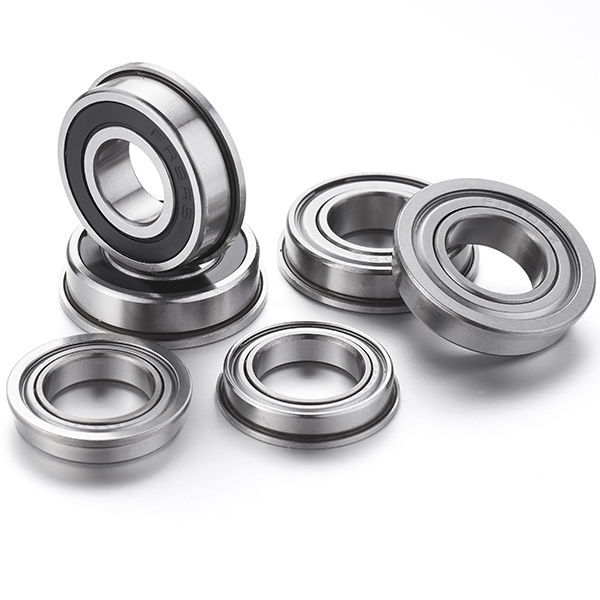Bearing Technology Advancements
Bearing Technology Advancements
Blog Article

Bearing Technology Advancements
Bearings have been a crucial component in various industries for centuries, enabling the smooth and efficient operation of machines. With the continuous advancements in technology, the field of bearing manufacturing has witnessed significant growth and innovation. Companies such as Www have played a pivotal role in driving these advancements by leveraging cutting-edge technologies to produce high-quality bearings that meet the evolving demands of modern applications.
One notable technological advancement in bearing manufacturing is the integration of smart sensors into bearings. These sensors can monitor various parameters such as temperature, vibration, and lubrication levels in real-time, enabling predictive maintenance strategies to prevent unexpected failures and downtime. By incorporating IoT (Internet of Things) capabilities, bearings can now communicate crucial data to centralized systems, allowing for proactive decision-making and optimizing operational efficiency.
Evolution of Bearings
The evolution of bearing technology has been remarkable, transitioning from simple metal-on-metal designs to sophisticated precision components capable of withstanding extreme conditions. Advanced materials like ceramics and polymers have revolutionized bearing performance, enhancing durability and longevity across diverse environments.
Furthermore, the evolution of bearing designs has led to the development of specialized bearings tailored for specific applications. For instance, high-precision bearings are engineered for industries requiring ultra-precise motion control, while high-temperature bearings are designed to operate efficiently in extreme heat conditions. These advancements reflect the continuous pursuit of innovation in bearing technology to address the unique challenges faced by different industries.
Improved Durability and Performance
The modern era of bearings is characterized by enhanced durability and performance, attributed to advancements in lubrication techniques, sealing mechanisms, and design optimization. For example, the implementation of advanced surface coatings and treatments has significantly increased wear resistance and corrosion protection, extending the operational lifespan of bearings in harsh environments.
Moreover, the integration of computational modeling and simulation tools has revolutionized the design process, enabling engineers to optimize bearing geometries for specific operating conditions. By fine-tuning factors such as contact angles, ball profiles, and cage designs, manufacturers can tailor bearings to deliver superior performance characteristics, including reduced friction, increased load capacity, and enhanced energy efficiency.
Trustworthy Bearing Factory: Tapered Roller Bearings Or Spherical Roller Bearings
When selecting bearings for industrial applications, partnering with a trustworthy bearing factory is paramount to ensure product quality and reliability. Companies like Tapered Roller Bearings Or Spherical Roller Bearings prioritize stringent quality control measures and continuous improvement processes to meet customer expectations.
An essential aspect of a trustworthy bearing factory is its commitment to quality assurance throughout the manufacturing stages. By implementing rigorous inspection protocols, material traceability practices, and performance testing procedures, these factories ensure that every bearing meets stringent industry standards and performance criteria. This dedication to quality control ultimately results in bearings that consistently deliver optimal performance and reliability in demanding operational environments.
Product Range and Customization
In addition to quality assurance, reputable bearing factories offer a diverse range of bearing types to cater to various industrial applications. From tapered roller bearings to spherical roller bearings, ball bearings, and more, customers have access to a comprehensive selection of products to meet their specific requirements. Moreover, these factories provide customization services, allowing for the adaptation of bearings to unique application needs, thereby enhancing performance and longevity.
By collaborating with a trustworthy bearing factory that prioritizes quality, reliability, and customization, industrial businesses can optimize their machinery's performance and longevity, ultimately improving operational efficiency and reducing maintenance costs.
A Guide to the Various Types of Bearings: Bearing Types You Should Know
Understanding the diverse types of bearings available is essential for selecting the most suitable bearing for specific industrial applications. Bearing Types You Should Know offers a comprehensive guide to different bearing categories and their distinctive features to aid in informed decision-making.
Common Bearing Types
Common types of bearings include ball bearings, roller bearings, thrust bearings, and plain bearings, each designed to fulfill specific operational requirements. For instance, ball bearings are ideal for high-speed applications with moderate radial loads, while roller bearings excel in handling heavy radial and thrust loads efficiently.
Thrust bearings are specialized components engineered to manage axial loads in one direction, providing essential support for rotational machinery. On the other hand, plain bearings offer a simple yet effective design suitable for low-speed, high-load applications where minimal friction is desired.
Specialized Bearings
In addition to standard bearing types, specialized bearings like tapered roller bearings, spherical roller bearings, and needle roller bearings cater to unique industrial needs. Tapered roller bearings are renowned for their ability to support high radial and axial loads in one direction, making them essential for heavy-duty applications requiring precise load distribution.
Spherical roller bearings, on the other hand, are engineered to accommodate heavy radial loads and misalignment issues, ensuring smooth operation in challenging environments. Needle roller bearings feature a compact design ideal for high radial load applications with limited space, offering efficient performance in constrained machinery configurations.
By familiarizing themselves with the various types of bearings and their distinct characteristics, industrial professionals can make informed decisions when selecting bearings for their specific operational requirements, ultimately enhancing machinery performance and reliability.